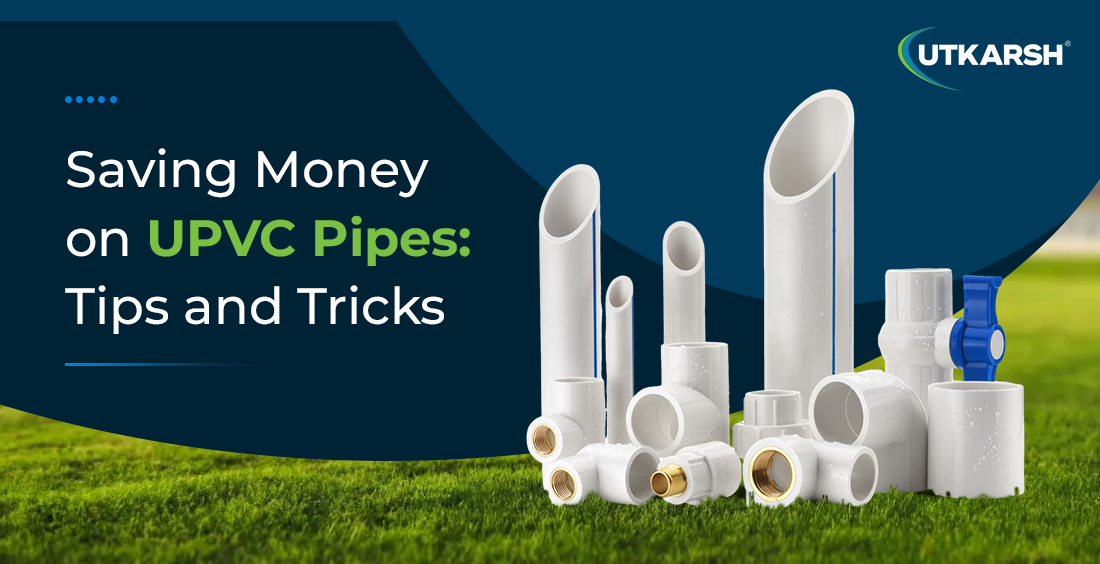Saving money on UPVC pipes: Tips and tricks

uPVC pipes are a popular choice for plumbing, drainage, and irrigation systems due to their durability, resistance to corrosion, and cost-effectiveness. However, when managing large projects, the costs can quickly escalate. To help you make the most of your budget, here are some practical tips and tricks to save money when purchasing and installing uPVC pipes.
1. Buy in bulk
One of the easiest and most effective ways to get a good uPVC pipe price is by purchasing in bulk. Many suppliers offer considerable discounts for large orders, making it a cost-effective strategy for larger projects. If your project requires significant amounts of piping, or if you can combine your order with other projects, this approach can lead to substantial savings. Even if you don’t need all the pipes immediately, buying in bulk and storing them properly for future use can still be a smart financial move, as you will likely avoid future price increases or shortages.
However, when buying in bulk, ensure that you have appropriate storage space. uPVC pipes are durable but should be stored in a dry, shaded area to prevent degradation from direct sunlight over time. Proper storage will ensure that your bulk purchase remains in excellent condition, ready for use when needed.
2. Shop around and compare suppliers
It is important not to settle for the first supplier you come across when buying uPVC pipes. Prices can vary considerably between suppliers, even for similar products. Take the time to obtain multiple quotes from different vendors and compare not only the price but also the quality, delivery options, and after-sales service. Sometimes a slightly higher price from a more reputable supplier can save you money in the long term, especially if they offer better customer support, faster delivery, or a more durable product. Also, consider local suppliers as they may offer lower shipping costs and quicker delivery times, which can prevent project delays.
3. Choose standard pipe sizes
Whenever possible, opt for standard pipe sizes rather than custom-made options. Custom-sized uPVC pipes can significantly increase your overall costs due to the additional manufacturing processes involved. Standard sizes, on the other hand, are mass-produced, which makes them more affordable. They are also readily available from most suppliers, which means you’ll avoid potential delays in procurement.
In addition, using standard-sized pipes can simplify future repairs or extensions, as you will easily find compatible parts. If your project allows for flexibility in pipe sizing, sticking to standard dimensions is a great way to keep costs down without sacrificing quality or performance.
4. Plan your project carefully
Proper planning is essential to keep the price of uPVC pipe in check. Make sure you have accurate measurements and know exactly how much piping you will need before placing an order. Overestimating can lead to wastage and additional storage costs, while underestimating may require you to reorder, resulting in further expenses and possible delays to your project.
By thoroughly planning, you can also identify the best time to purchase materials, taking advantage of seasonal discounts or sales. Some suppliers may offer reduced prices during certain times of the year, so keeping an eye on the market and planning your purchases accordingly can help you save money.
5. Reuse and recycle
If your project involves renovating or extending an existing system, consider reusing any old uPVC pipes that are still in good condition. uPVC pipes are known for their long lifespan, so it’s possible that parts of an old system can be salvaged and reused. Even if some sections need replacing, you may still be able to repurpose other parts, saving both money and materials.
Reusing existing pipes not only cuts costs but also reduces waste, making your project more environmentally friendly.
6. Consider future-proofing
While it might seem counterintuitive when trying to save money, it can be worthwhile to consider future-proofing your project by opting for higher quality or slightly more expensive uPVC pipes. These pipes might offer better durability, higher pressure ratings, or increased resistance to environmental factors, meaning they’ll last longer and require less maintenance or replacement over time. Spending a little more upfront can save you money on repairs and replacements in the long run.
Make sure to choose pipes with appropriate certifications for their intended use, ensuring they meet the necessary safety and quality standards. Investing in quality products can prevent costly failures and ensure your project stands the test of time.
Looking for high-quality uPVC pipes?
Explore our uPVC pipes and fittings. They come with UV resistance and offer an ideal and cost-effective solution for cold water transportation. These pipes are manufactured to international standards using high-quality raw materials, ensuring durability and performance.
Key Specifications:
Utkarsh uFLO UPVC pipes and fittings are available in Schedule 40 and 80, following ASTM D1785 standards for pipes and ASTM D2467 standards for threaded and push-fit fittings. These pipes are easy to install, with leak-proof joints that maintain pressure even after prolonged use. With a smooth inner surface, they provide optimal flow rates and prevent clogging, rusting, and pitting. The pipes are self-extinguishing and offer a cost-effective solution with low maintenance over time.
Identification markers include a blue stripe for Schedule 40 and a red stripe for Schedule 80, with both types available in white.
Applications:
Utkarsh uFLO UPVC pipes are suitable for various sectors, including food processing, chemical industries, and residential and commercial use.
Testing:
Each pipe undergoes rigorous tests such as visual inspection, water effect tests, density checks, hydraulic tests, flattening, reversion, opacity, and tensile strength verification to ensure the highest quality.
If you are looking for uPVC fittings, we have a diverse range, including, equal tee, end cap, pipe clip and more.